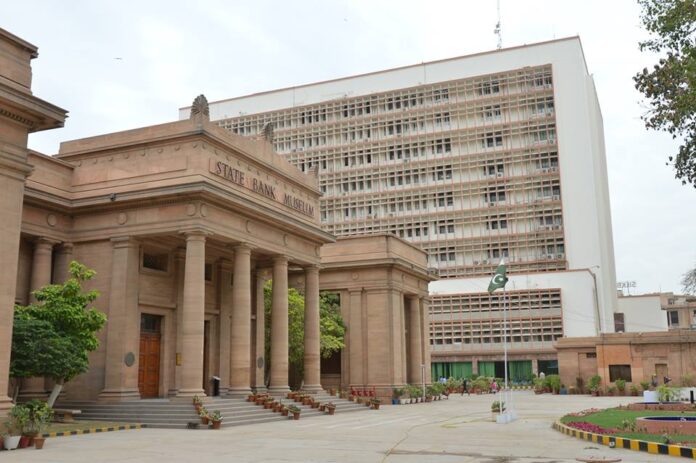State Bank of Pakistan (SBP) said that the financial sector exhibited strong growth maintaining its financial soundness and operational resilience due to policy measures, regulatory interventions and assistance by multilateral organisations and consequent economic recovery and declining inflation.
The central bank, in its media statement on ‘Financial Stability Review 2023’, mentioned that the financial sector grew by 29.5%, its asset base expanded by 27.0%, banking sector’s CAR improved to 19.7% and loan provisioning coverage surged to 92.7% by end December 2023.
Assessing the overall risks to financial stability as manageable the SBP stressed policy continuity and termed structural reforms critical for sustained improvement in the country’s macroeconomic fundamentals and the resilience and performance of the financial sector.
The Financial Stability Review (FSR) for CY2023, prepared and published as a statuary requirement, presents performance and risk assessment of various segments of the financial sector and also assesses the financial soundness of major users of credit and financial services.
During the calendar year 2023, E-banking transactions continued to drive growth while SBP moved to implement the third phase of Raast’s person-to-merchant (P2M) mode to facilitate digital payment acceptance for merchants and businesses.
The FSR highlighted the healthy performance of the non-bank financial sector during CY2023 with strong expansion in the asset base of Development Finance Institutions (DFIs) and Non-Bank Financial Institutions (NBFIs) while the insurance sector witnessed growth in assets and gross premium.
Despite challenges to the macroeconomic environment in the first half of 2023, the policy measures and regulatory interventions taken to address growing imbalances coupled with securing of 9-month Stand-by-Agreement (SBA) from IMF helped in improving the macroeconomic conditions in second half of CY2023, the SFR observed.
Inflation started falling, economic growth recovered, and exchange rate stabilized towards the year’s end, the Review stated adding that, in this backdrop, the financial sector exhibited strong growth and performance and maintained its financial soundness and operational resilience. The asset base of the financial sector expanded by 27.0 percent in CY2023, which was mainly driven by the banking sector.
“The growth in assets was primarily driven by investments in government securities while private sector advances contracted in the backdrop of stressed macro-financial conditions,” the Review noted adding that expansion of the banks’ balance sheet was mainly funded by deposits, which posted a 20-year high growth in a high return environment.
During the period, non-performing loans (NPLs) to loans ratio marginally increased to 7.6 % by end December 2023 from 7.3% in December 2022, and the provisioning coverage further improved to 92.7%, it added.
Healthy earnings of the banking sector on the back of high rates and expansion in earning assets supported the solvency position and capital adequacy ratio (CAR) improved to 19.7% by end December 2023 well above the minimum regulatory requirement.
The Islamic banking institutions continued to maintain growth momentum in CY2023 and its resilience further improved with strong earnings and comfortable asset quality indicators, the Review states adding, however microfinance banks (MFBs) sector continued to experience stress in CY2023.
The Review found overall position of the non-financial corporate sector encouraging as solvency indicators and repayment capacity remained satisfactory. It stated that the large borrowers of banking sector had exhibited stable repayment capacity and there were no significant delinquencies.
The FSR also highlighted the operational resilience of Financial Market Infrastructures (FMIs) during CY2023 where E-banking transactions continued to drive growth in retail payments and SBP moved to the third phase of Raast (P2M) mode.
The SBP said that overall risks to financial stability appear to be manageable due to anticipated moderation of macroeconomic stress and strong buffers and risk management capabilities of the banking sector.
The latest stress test results suggest that the banking sector has adequate resilience to withstand the severe but plausible macro-financial shocks in the medium term, the FSR assessed adding “However, policy continuity on structural reforms remains critical for both sustained improvement in country’s macroeconomic fundamentals and the resilience and performance of the financial sector.”
























